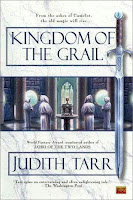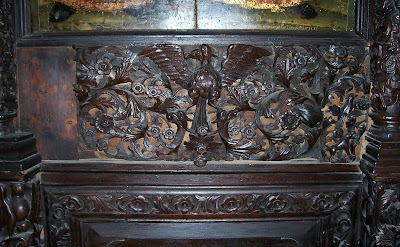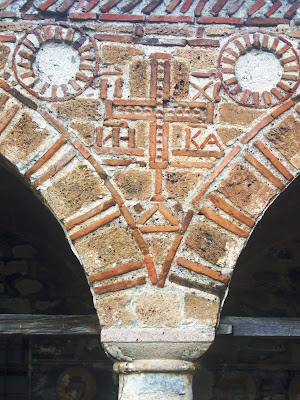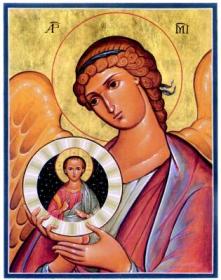From the beginning, I have blogged under my long-time on-line alias
Roland. In fact, I originally planned to name my blog
Oliphant: The Horn of Roland. I was pretty upset when I found the name
Oliphant was already taken. The resulting frustration launched me into a small crisis in which I questioned the purpose and content of my intended blog. I realized it would have a primarily religious/theological focus, and I came up with a more fitting title. But it did not then occur to me to switch to a different alias.
I first used the name Roland my first summer in grad school. It was a hot summer, with frequent record-breaking, triple-digit temperatures, and I was living in a cheap room without air conditioning. So I spent my afternoons studying in the comfort of a lounge in the student union. Every once in a while, for a break, I would go the basement and play the video game
Tutankham. When I got a high score and had to come up with a name, I spontaneously chose Roland, inspired by the
Warren Zevon song, “
Roland the Headless Thompson Gunner”. Years later, I revived the name for my high scores in
Tetris on a friend’s computer and subsequently began using it in various on-line contexts.
About a decade ago, not long after 9/11, I read
The Song of Roland, the medieval French epic poem based loosely on the 778
Battle of Roncesvalles, and I began to assimilate my on-line persona more to this older Roland by choosing appropriately medieval-looking avatars, or by using the name
Roland778 when Roland was already taken.
At the same time, in other on-line contexts I was using the alias
Arimathean. Long before my chrismation, when Joseph of Arimathea formally became my
patron saint, I had considered him my patron. Within a year of starting my blog, I realized this would have been a more appropriate alias (thus my avatar, which is a mosaic image of Joseph of Arimathea), but I had already begun to establish myself in the blogosphere as Roland. So I decided to wait for a more opportune time to make the switch.
For the past two years while I have been studying theology, I haven’t had much time for blogging (or recreational reading or TV or movies . . .). In the few forums where I have been active, I have mostly been using
Arimathean, so
Roland is now less likely to be missed. So, as of today, my handle in the blogosphere is changing to
Arimathean (though I will continue to go by
Roland in some non-blogging contexts).
Speaking of recreational reading . . . My first post-seminary novel brought together both of my on-line personae. The hero of Judith Tarr’s
Kingdom of the Grail is Roland, who is a descendant of Merlin and
Nimue. Nimue, in turn, is the sister of Parsifal, the Grail King, whom one can infer to be descended from . . . Joseph of Arimathea (though he is not mentioned by name in the book). The novel’s execution was not as good as the concept – it too often followed the conventions of the romance genre rather than historical fantasy.
I am also adopting another change. I recently read a
Slate article about “logical punctuation”. Until now, for my whole literate life I have slavishly followed the convention of placing commas and periods inside quotation marks. Unlike nearly all other grammar and punctuation rules, this one never made sense to me, and I was always ready to disparage it whenever the opportunity arose, even while following it scrupulously and enforcing it as an editor. In the
Slate article, I learned that this is not the universal English language rule my teachers would have me believe. Rather, it is a peculiarly American rule. The rest of the English-speaking world follows the more logical convention of placing commas and periods after the closing quotation mark (unless the punctuation is logically a part of the quote). On-line, it appears that most Americans are now punctuating like Brits. Wikipedia and other sites have adopted logical punctuation as their standard. And even the old guard has conceded that when quotes enclose a URL any following punctuation should be placed outside the closing quote so that no one tries to paste it into the address bar of his browser as if it were part of the address. For now the conflict continues, but it is already clear that the prescriptivist-traditionalist American copy editors are doomed. I’m happy to join the winning side.




















































































